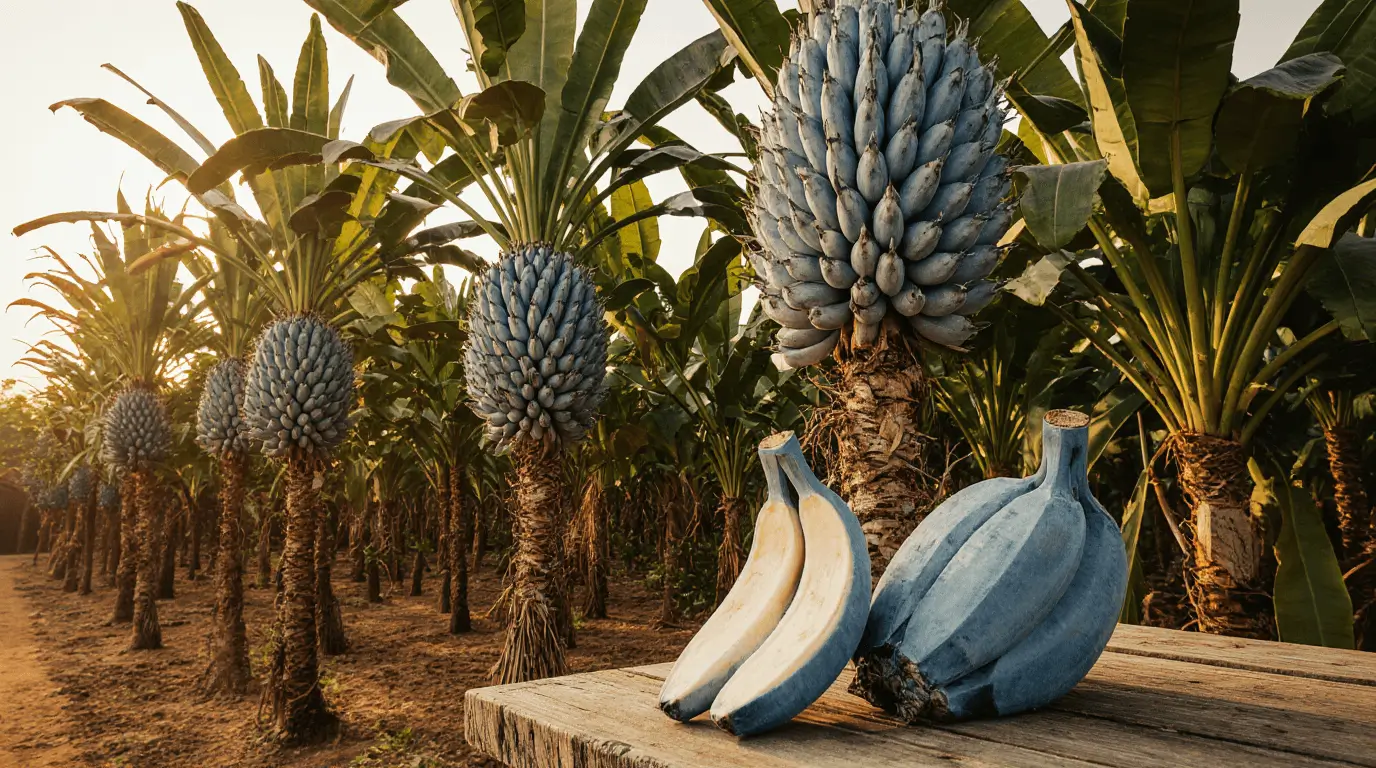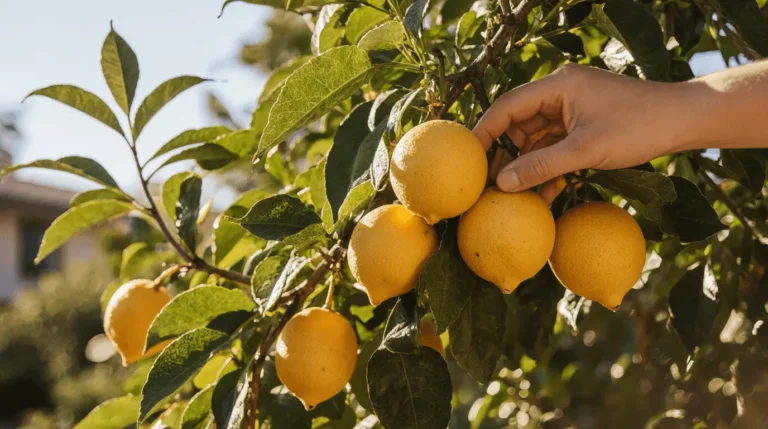The Blue Java Banana tree is one of the most unique and in-demand varieties of blue java bananas I’ve ever grown. Known for its cream-like flavor and light blue-green coloration, this hybrid beauty, native to Southeast Asia, truly stands out in any tropical garden. I remember the first time I saw its medium-sized fruit, about six inches in length, hanging from the tree—its slightly tough, thick skin perfectly shields the inside flesh from damage, keeping it fresh and soft. When ripe, the sweet, vanilla-like taste and creamy texture are reminiscent of real ice cream, making it a favorite dessert for fruit lovers everywhere.
Growing these trees has taught me that even beginner gardeners, regardless of their skill levels, can easily maintain them. The Blue Java doesn’t demand much—just simple care, minimal upkeep, and a little attention to watering and sunlight. With consistent effort, your fruit will grow beautifully, and this Blue Java Banana tree will quickly become a highlight of your garden collection, offering both charm and taste beyond compare.
Climate Requirements
Ideal Growing Conditions:
- Tropical and humid climates are perfect for Blue Java Bananas.
- Keep temperatures between 24 and 35 degrees Celsius (75 and 95 Fahrenheit).
- Watering should be frequent, around at least 4 inches (10 cm) of water each month.
- Ensure Light exposure for about 6 hours a day of direct sunlight.
- Avoid frost, as it can be fatal to plants that cannot withstand colder weather.
When I started growing Blue Java Bananas, I realized how much they enjoy consistent warmth and moisture. These fruit trees truly thrive in warm soil with proper climatic requirements. Regular watering, good light, and protection from frost help the plants develop strong roots and bear fruit ideally.
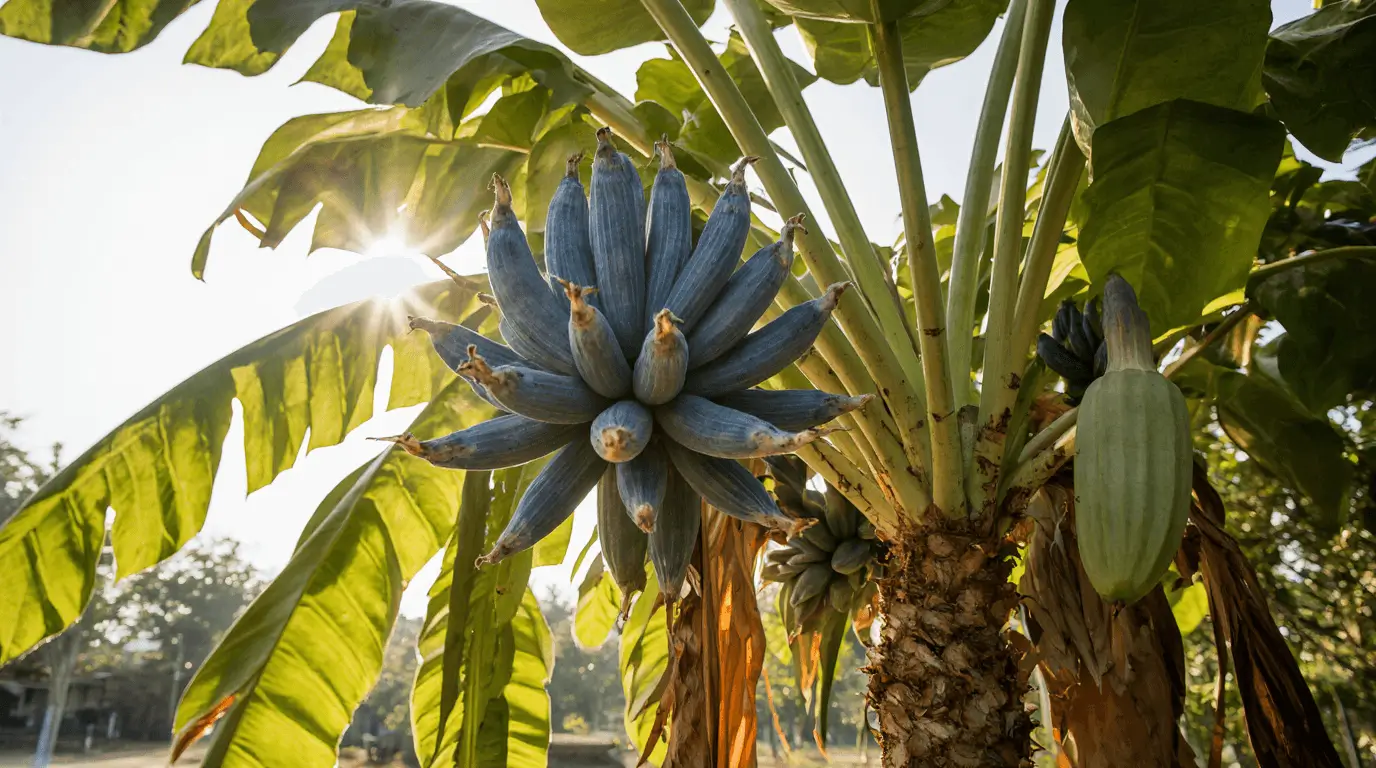
Planting and Soil Requirements
How to Plant Blue Java Bananas:
- Choose an ideal location with well-draining soil that stays organically rich and full of life.
- The perfect environment for growing banana ice cream plants includes loamy or sandy loam soil.
- Maintain a pH range of 5.5 to 7.0 for better development and higher yield.
- Avoid alkaline or acidic soil, as it can negatively impact the plant.
- Use Compost or organic matter to add fertility and improve drainage.
- Create a hole about two to three times wide and deep as the root ball.
- Make sure the Seed is planted at the same depth as in its container, then fill with dirt.
- Gently compact the earth around the tree and water plenty after planting.
When I started producing Blue Java Bananas, I realized how essential proper irrigation and drainage are. A clean area, free of weeds, pebbles, and objects, helps roots grow stronger. Full light exposure during the day keeps the plants thriving, and with just the right care, these tropical beauties reward you with creamy, sweet fruit that’s well worth the effort.
Watering Guidelines
When caring for Blue Java Bananas, regular watering is absolutely necessary, especially during the growing season when the weather is hot and the soil dries out quickly. I’ve learned from experience that keeping the moisture levels balanced makes a big difference in how the trees flourish and yield wonderful fruit for years.
- Water thoroughly once or twice a week, depending on the state of the soil.
- Add enough water so it reaches at least 6 inches below the surface.
- In Winter, less frequent watering is better, but don’t allow the soil to become entirely dry.
- Prevent overwatering and under-watering—both can harm the root system and cause rot.
- Always keep an eye on moisture levels to ensure the right care.
If under-watering occurs, the fruits may become undersized and dry, while overwatering can induce root rot that damages the plant. When done right, the banana ice cream trees respond beautifully to consistent watering, proper planting, and ongoing attention—rewarding your effort with lush leaves and sweet results.
Pests and Diseases
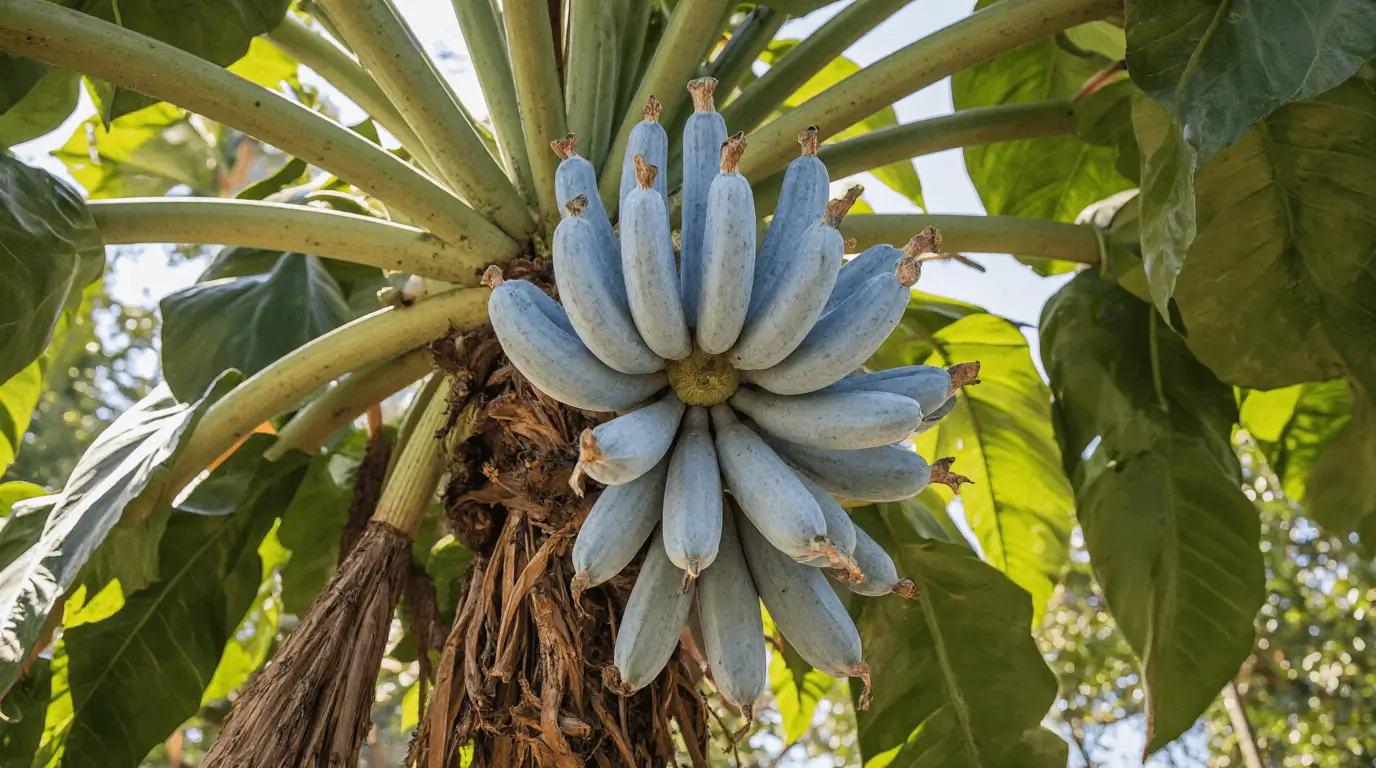
When Blue Java Bananas reach full maturity, the fruits are carefully harvested to ensure they stay completely developed and free from bruises. I’ve learned that being patient and waiting until the skin turns a light hue of blue is key—the fruit will detach easily from the stem when ready. Always use a sharp knife to cut the bunch from the tree, and handle delicately to prevent damage. Keep the fruit at room temperature for about a week to allow proper ripening before eating.
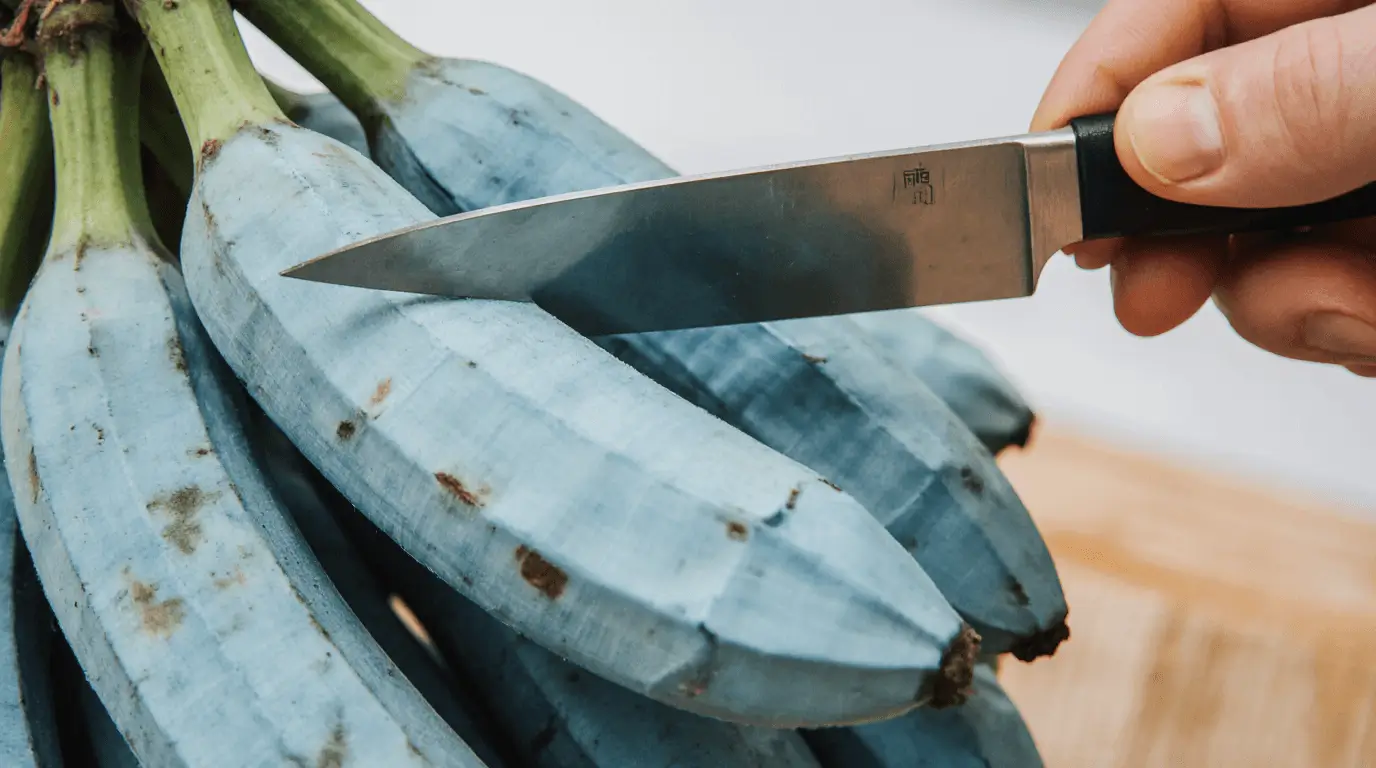
It’s also crucial to safeguard your ice cream banana trees during winter, as frost and freezing temperatures can harm their growth. I usually Wrap my trees with burlap or blankets, add mulch at the base, and assist the earth in maintaining warmth. After heavy snow, gently Brush it off the leaves and stems to avoid breaking. By doing this, your plants can yield fruit for many years when properly cared for.
Read Also: Tropical Fruit Trees: Grow Exotic Paradise at Home (Grow Guide)

Conclusion
Growing a Blue Java Banana tree is one of the most rewarding tropical gardening experiences you can enjoy. With its soft, creamy, and vanilla-flavored fruit, this tree not only adds an exotic touch to your garden but also provides a natural dessert alternative. By following the right climate, soil, and watering tips, even beginners can grow healthy, fruit-bearing trees that stand out for their beauty and taste. Whether you plant it outdoors or in a greenhouse, the Blue Java Banana will thrive with care, turning your backyard into a tropical paradise filled with sweet rewards.
Read Also: Natural Healing & Wellness: Nature’s Remedies Guide
Read Also:
-
7 Secrets to Growing a Thriving Banana Tree in Florida
-
5+ Surprising Blue Java Banana Benefits You’ll Love
-
7 Surprising Facts: Do Dwarf Banana Trees Produce Fruit?
-
3+ Best Banana Plant Fertilizers for Faster Growth
FAQs
- What makes the Blue Java Banana different from regular bananas?
The Blue Java Banana is famous for its unique blue-green skin and creamy, vanilla-like flavor, earning it the nickname “ice cream banana.” - Can Blue Java Bananas grow in colder climates?
They prefer warm, tropical climates, but you can protect them during winter by wrapping the tree, adding mulch, and maintaining soil warmth. - How often should I water a Blue Java Banana tree?
Water deeply once or twice a week, ensuring the moisture reaches at least 6 inches below the surface without causing root rot. - What type of soil is best for Blue Java Bananas?
They thrive in loamy or sandy loam soil with a pH of 5.5 to 7.0, rich in organic matter and well-draining to support healthy root growth. - How long does it take for Blue Java Bananas to fruit?
Typically, a Blue Java Banana tree starts producing fruit within 9 to 15 months, depending on its growing conditions and care.

